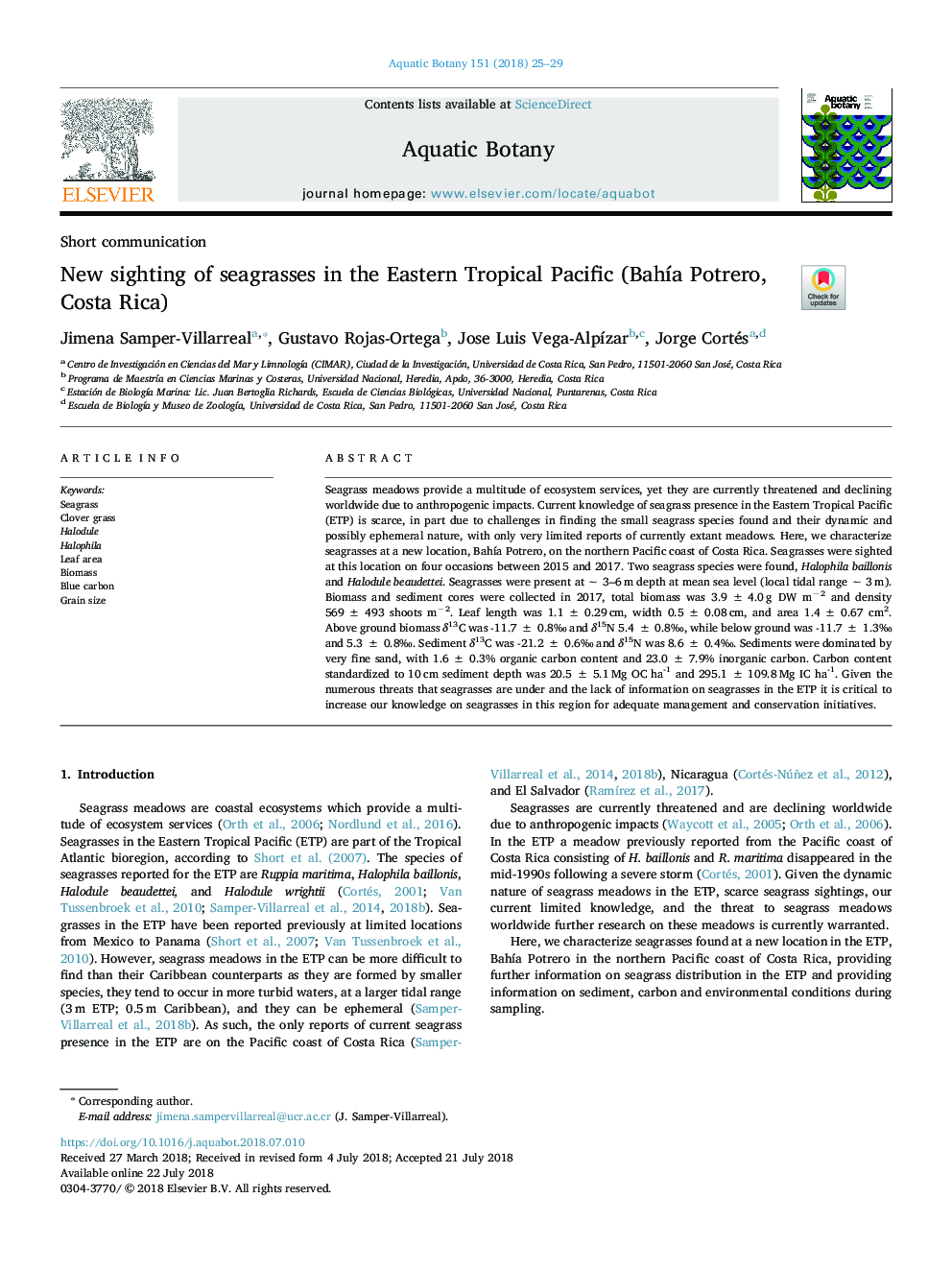| Article ID | Journal | Published Year | Pages | File Type |
|---|---|---|---|---|
| 8883533 | Aquatic Botany | 2018 | 5 Pages |
Abstract
Seagrass meadows provide a multitude of ecosystem services, yet they are currently threatened and declining worldwide due to anthropogenic impacts. Current knowledge of seagrass presence in the Eastern Tropical Pacific (ETP) is scarce, in part due to challenges in finding the small seagrass species found and their dynamic and possibly ephemeral nature, with only very limited reports of currently extant meadows. Here, we characterize seagrasses at a new location, BahÃa Potrero, on the northern Pacific coast of Costa Rica. Seagrasses were sighted at this location on four occasions between 2015 and 2017. Two seagrass species were found, Halophila baillonis and Halodule beaudettei. Seagrasses were present at â¼ 3-6â¯m depth at mean sea level (local tidal range â¼ 3â¯m). Biomass and sediment cores were collected in 2017, total biomass was 3.9â¯Â±â¯4.0â¯g DW mâ2 and density 569â¯Â±â¯493 shoots mâ2. Leaf length was 1.1â¯Â±â¯0.29â¯cm, width 0.5â¯Â±â¯0.08â¯cm, and area 1.4â¯Â±â¯0.67 cm2. Above ground biomass δ13C was -11.7â¯Â±â¯0.8â° and δ15N 5.4â¯Â±â¯0.8â°, while below ground was -11.7â¯Â±â¯1.3â° and 5.3â¯Â±â¯0.8â°. Sediment δ13C was -21.2â¯Â±â¯0.6â° and δ15N was 8.6â¯Â±â¯0.4â°. Sediments were dominated by very fine sand, with 1.6â¯Â±â¯0.3% organic carbon content and 23.0â¯Â±â¯7.9% inorganic carbon. Carbon content standardized to 10â¯cm sediment depth was 20.5â¯Â±â¯5.1â¯Mg OC ha-1 and 295.1â¯Â±â¯109.8â¯Mg IC ha-1. Given the numerous threats that seagrasses are under and the lack of information on seagrasses in the ETP it is critical to increase our knowledge on seagrasses in this region for adequate management and conservation initiatives.
Related Topics
Life Sciences
Agricultural and Biological Sciences
Aquatic Science
Authors
Jimena Samper-Villarreal, Gustavo Rojas-Ortega, Jose Luis Vega-AlpÃzar, Jorge Cortés,
